The Reflection: A Deep Dive into Anime and Manga


Intro
The concept of reflection in anime and manga is expansive and multifaceted. It serves not just as a storytelling technique but also facilitates character development and allows audiences to engage with more profound themes. By dissecting this narrative device, we can decipher the layers of meaning embedded within these art forms. Through this exploration, an understanding of cultural implications and how they resonate with audiences emerges. This article aims to provide an in-depth analysis that captures the essence of reflection in the anime and manga genres.
Character Profiles
Overview of Main Characters
Main characters often embody the core themes of reflection. For instance, in Naruto, the protagonist undergoes significant character growth influenced by his past experiences and interactions with others. His struggles with isolation and desires for acceptance provoke introspection, not just in himself, but in the viewers as well. Characters like Sasuke, who reflect on revenge and identity, contrast with Naruto's optimistic approach. This contrast furthers the narrative and illuminates the different paths one can take when confronted with challenges.
In Death Note, Light Yagami's transformation from an idealistic student to a power-hungry figure clearly illustrates reflection's complexity. His introspection spirals into moral dilemmas that challenge the audience's perspective on justice and morality.
Supporting Characters
Supporting characters also play a crucial role in this reflective narrative. In My Hero Academia, characters like All Might and Eraser Head serve as reflections of the main character's growth. Their backstories and experiences shape the protagonist, Midoriya, guiding him through his journey. Supporting characters often embody perspectives that prompt the main characters to reassess their paths and decisions. The dynamics between them enrich the narrative, offering valuable insights.
Theme Exploration
Central Themes
Reflection leads to the exploration of several pivotal themes within anime and manga. Common themes include identity, loss, redemption, and the quest for purpose. These themes resonate deeply with audiences, encouraging personal reflection. For example, the theme of identity is pronounced in Attack on Titan, where characters continually confront their true selves amidst societal chaos. This theme of self-reflection provokes questions about one's identity and purpose.
Cultural References
Cultural references in these narratives often amplify themes of reflection. For instance, many narratives draw from Japanese folklore and historical events, grounding their stories in cultural contexts that invite deeper scrutiny. The use of familiar cultural motifs allows audiences to relate personal experiences to broader societal reflections.
Popular Series and Recommendations
Top Anime Series of the Year
Some notable series that encapsulate the essence of reflection include:
- Jujutsu Kaisen
- Mushoku Tensei: Jobless Reincarnation
- Makoto Shinkai's Weathering with You
Each of these series showcases narratives that encourage viewers to reflect on themes of courage, destiny, and the consequences of choice.
Hidden Gems in Manga
Amidst popular titles, a few hidden gems to consider are:
- Kino's Journey
- Banana Fish
- A Silent Voice
These works often delve into introspective themes, offering narratives that capture the inner thoughts and struggles of their characters, prompting the reader to engage in reflection on their own lives.
"Reflection in anime and manga doesn't just enhance the narrative; it transforms the viewer's experience, creating a resonating impact that lingers long after viewing."
The exploration of reflection in anime and manga is an invitation to engage more richly with these art forms. This journey not only enriches our understanding of character and story but also encourages us to ponder our own reflections in the context of culture and personal growth.
Understanding Reflection in Anime and Manga
Reflection holds a significant role in anime and manga. It invites viewers into a deeper examination of characters' thoughts and emotions. More than just a narrative device, reflection shapes the overall thematic structure within stories. Understanding this allows audiences to appreciate nuance and complexity.
Reflection in storytelling pertains to moments where characters consider their life choices, experiences, and relationships. These moments lead to profound insights and often affect subsequent actions in the narrative. This process enhances emotional engagement. Specifically, it allows viewers to see growth and shifts in character dynamics.
Additionally, reflection fosters an environment for relatable experiences. It resonates with audiences, who may find themselves mirroring these experiences in their lives. This connective tissue reinforces the impact of narrative. It transforms ordinary plots into compelling journeys of self-discovery.
Defining Reflection
Reflection can be defined as the process of contemplating past experiences or thoughts. In anime and manga, it manifests in various forms such as inner monologues, conversations between characters, or visual representations in scenes. Characters may reflect on their past decisions, relationships, or existential dilemmas. These devices facilitate deeper connections between the audience and the narrative.
Moreover, when characters engage with their reflections, it summons a common human experience: the struggle for self-understanding. This struggle enriches the narrative, adding layers to character development. For instance, when a character confronts past trauma through reflection, it can evoke empathy from the viewer, establishing a sense of shared experience.
Thus, defining reflection is crucial. It sets the foundation for understanding its various displays in the medium. Readers can better appreciate reflective moments when they recognize this concept's importance in shaping story arcs and character growth.
Historical Context of Reflection in Japanese Storytelling
Reflection is not a new concept in Japanese storytelling. It has roots in classical literature and traditional narratives. Works such as "The Tale of Genji" feature reflective themes, highlighting characters' introspections. As narratives evolved, reflection maintained its importance but adapted through modern mediums.
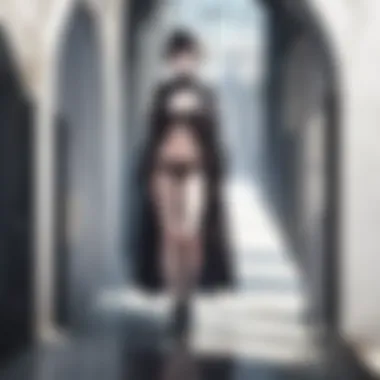

In the context of anime and manga, the post-war era marked a turning point. The tumultuous societal changes led creators to explore complex emotional and psychological themes. Consequently, reflection became a tool for addressing broader societal issues, such as loss, identity, and morality. Notable series like "Neon Genesis Evangelion" and "Ghost in the Shell" delve into philosophical questions through reflective character development, a testament to the enduring relevance of this device.
Thus, understanding reflection through its historical lens is necessary to appreciate its depth today. It reveals how creators have historically used this concept to resonate with audiences, providing a rich narrative landscape that continues to evolve.
Narrative Devices: The Role of Reflection
Reflection in anime and manga plays a crucial role as a narrative device. It enriches storytelling by providing deeper insights into characters and their journeys. This method allows for a more profound exploration of identity, motivation, and consequence, enabling viewers and readers to engage with the content on a personal level. By utilizing reflection, creators often weave complex emotional landscapes that resonate with audiences.
Key elements to consider include:
- Depth of Character: Reflection opens a window to the inner workings of a character's mind. Understanding their thoughts and feelings can turn a one-dimensional character into a three-dimensional one who resonates more with the audience.
- Emotional Connection: When viewers can relate to a character's reflections, it fosters a stronger emotional bond. This connection can drive the narrative forward, keeping audiences invested in the character's outcomes.
- Contextual Understanding: Through reflective moments, viewers gain context about a character's past and present. This information facilitates smoother narrative transitions and deeper comprehension of the plot.
First-Person Narratives
First-person narratives are a preferred method of reflection in anime and manga. Here, the storyteller speaks directly from a character's perspective, sharing their thoughts and feelings intimately. This technique eliminates the barrier between audience and character, pulling viewers directly into the character's mind. It allows for a raw, authentic portrayal of confusion, joy, or sorrow. As a result, audiences see the world through the eyes of the characters, making their experiences more impactful.
An example can be found in works like "Kimi no Na wa" (Your Name), where the protagonist's internal dialogue reveals layers of emotion that enrich the narrative. Through these first-person reflections, the audience learns about the character's desires, regrets, and motivations, which are pivotal in driving the story forward.
Flashbacks and Memories
Flashbacks and memories provide a robust framework for reflection in storytelling. This narrative device allows characters to revisit key moments from their past that shape their current circumstances. Flashbacks serve multiple purposes: they can build suspense, deepen emotional connections, and clarify motivations.
By illustrating past events, flashbacks can enhance themes such as loss or love. For instance, in the anime "Steins;Gate," flashbacks play a crucial role in understanding how previous choices lead to the present crisis. When characters are faced with dilemmas, their memories serve as a compass to navigate the present, often leading to character growth or realization. This retrieval of memory not only provides background but also shows the dynamic nature of the characters’ journeys.
Reflective Monologues
Reflective monologues are another essential narrative device that enhances reflection in anime and manga. This technique gives characters a platform to vocalize their thoughts, feelings, and realizations. These moments can occur at the climax or resolution of stories, offering insights into the character’s mental state and prompting viewers to reflect alongside them.
Through monologues, characters can express doubts, fears, and hopes. This honesty often mirrors the audience's feelings, fostering a connection between the two. A notable example can be seen in "Death Note," where Light Yagami’s internal monologues reveal his moral dilemmas and further his character's complexity. Such honesty in monologues can lead to profound moments of realization or transformation, thereby enriching the narrative overall.
Reflection as a narrative device enriches storytelling, providing depth, emotional connections, and contextual understanding.
Character Development Through Reflection
Character development is a fundamental aspect of storytelling in anime and manga. Through the lens of reflection, creators can explore the intricate layers of characters’ psyches, presenting their complexities in a manner that resonates with audiences. This theme deepens the viewer's connection to characters, offering insights into their motivations, flaws, and growth. Reflection instills a sense of realism in characters, making them relatable in their struggles and triumphs.
Inner Conflicts and Resolutions
Inner conflicts are essential to character development. They capture the dynamic struggles within a character, often stemming from contrasting desires or principles. For instance, a character may grapple between duty and personal happiness. This turmoil often leads to moments of self-reflection, where the character assesses their values, regrets, and aspirations.
In many series, these inner conflicts manifest through various narrative devices like voiceovers or visual cues that portray the character’s mental state. As the character navigates these challenges, resolutions often arise from their insights gained during reflective moments.
Breaking down these conflicts allows the audience to understand the characters on a deeper level. Where traditional plots may offer straightforward challenges, anime and manga adeptly juxtapose external action with internal drama, heightening emotional stakes.
Character Arcs Driven by Self-Reflection
The processes of self-reflection are crucial in driving character arcs. When characters confront their past decisions, the impact of these reflections shapes their future actions and development. A well-executed character arc showcases how individuals grow over time, often catalyzed by self-discovery via reflective thinking.
For example, in the anime "Your Lie in April," the protagonist, Kōsei Arima, undergoes significant growth fueled by his reflections on grief and love. His journey illustrates an important realization: embracing pain leads to healing. Such character arcs resonate with viewers because they mirror real-life experiences, allowing audiences to connect on personal levels.
As reflective moments unfold, characters may recognize areas for improvement. These insights prompt them to change unfavorable behaviors or make amends, showcasing the power of reflection. Consequently, most well-crafted narratives emphasize the journey of self-reflection, unveiling richer character development that elevates the entire story.
Reflection not only shapes individual characters but also influences the broader narrative surrounding them, allowing for dynamic storytelling that engages viewers.
Themes Associated with Reflection
Reflection in anime and manga does more than provide insight into character motivations; it acts as a powerful thematic backbone that enriches storytelling. This theme resonates deeply with audiences as it taps into universal experiences and emotions. By examining these themes, the narrative gains not just depth but also relatability, allowing the audience to connect with the characters on a more profound level.
Identity and Self-Discovery
One of the foundational themes within reflection is identity and self-discovery. Characters often embark on journeys that require them to confront their past, understand their present, and ultimately shape their future. This exploration can manifest in various ways, like personal quests, emotional struggles, or philosophical questioning. For instance, in Naruto, the protagonist’s journey of self-discovery is driven by his rejection by society and his ambition to become Hokage. Throughout this process, the moments of reflection lead to critical realizations about who he is and who he wants to be.
The narrative unfolds layers of identity through reflective moments, revealing what shapes a character's essence. These can include formative experiences, relationships with others, and even internal conflicts. By employing such encounters, anime and manga creators poignantly illustrate how identity is malleable, contrasting the static perceptions of self that often dominate popular narratives.
Consequences of Past Actions
The theme of consequences associated with past actions is prevalent in anime and manga. Characters reflect on previous decisions, often realizing that choices made can have profound effects on their lives and those around them. This retrospective look serves not just as a plot device, but as a philosophical examination of accountability and morality.
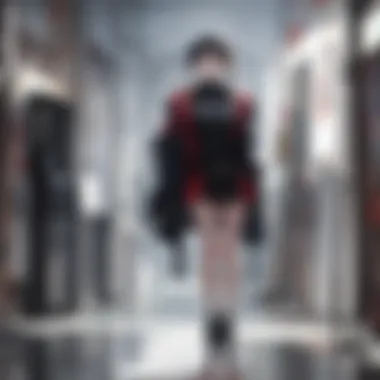
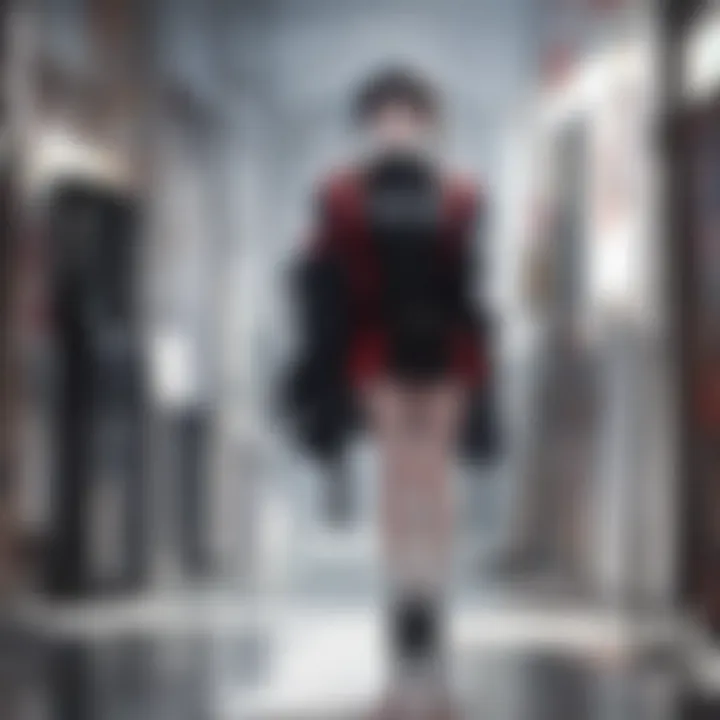
In Fullmetal Alchemist, for instance, the protagonists constantly grapple with the fallout from their actions, particularly regarding the catastrophic consequences of their alchemical experiments. The reflection on these past choices fosters a rich narrative that engages viewers to ponder ethical dilemmas alongside the characters. Such themes encourage discussions around personal responsibility and the impact of one's actions on both self and society.
"The past may shape us, but it does not define us. It is through reflection that we understand our path forward."
Coping with Loss and Grief
Grief and loss emerge as critical themes linked to reflection in anime and manga. These narratives often explore characters who confront profound losses, such as death, betrayal, or missed opportunities. The reflective moments allow viewers to witness the complexities of mourning and the process of finding closure.
A notable example is Your Lie in April, where the protagonist grapples with the loss of his mother and the impact it has on his life and music. The experiences of loss lead to introspective moments that challenge him to confront his emotions and fears. The portrayal of grief in such stories paints an authentic picture of the human experience, encouraging empathy among viewers who may be dealing with similar feelings in their own lives.
Through these themes, reflection becomes a tool for understanding the human condition in all its intricacies. The examination of identity, the implications of actions, and the process of coping form a tapestry of interconnected experiences that resonate deeply with the audience.
Cultural Impacts of Reflection in Anime and Manga
The theme of reflection plays a significant role within the realms of anime and manga, extending beyond mere storytelling. It allows creators to explore complex social dynamics, personal identity, and trends that resonate with their audiences. By analyzing this theme, we can understand how characters’ introspective journeys often mirror broader societal issues, shaping the cultural landscape of the medium.
Reflection as a Mirror of Society
Anime and manga frequently serve as valuable commentaries on contemporary society. When characters undergo reflective moments, they often confront societal norms and expectations. Through these narratives, audiences encounter diverse viewpoints that challenge preconceived notions and stereotypes. For instance, in works like Shingeki no Kyojin (Attack on Titan), characters question the morality of their actions against the backdrop of a divided society. Here, reflection does not only pertain to individual experiences but also examines how people relate to their culture.
Key aspects that demonstrate this include:
- Cultural Critique: Characters often highlight flaws in their societies, raising questions about justice, freedom, and morality.
- Social Issues: Many series tackle real-world problems such as discrimination, mental health, and economic disparity, encouraging audiences to delve deeper into these themes.
- Collective Experience: Reflection often emphasizes that individual experiences connect with broader cultural narratives, fostering community understanding and empathy amongst viewers.
These elements serve to elevate the medium of anime and manga, transforming it into a platform for cultural discourse and enlightening viewers.
Reflection on Modern Issues
In recent years, the interplay of reflection and modern issues has gained prominence in anime and manga. As society evolves, these narratives seek ways to discuss contemporary challenges. Issues such as technology's impact on relationships, climate change, and political discontent frequently find their place in these narratives. Through reflection, characters articulate anxieties and uncertainties that mirror the collective sentiment of society today.
For example, series like Kyoukai no Kanata (Beyond the Boundary) delve into the psychological ramifications of conflict, bringing to light the mental health struggles faced by many in today's world. Some notable points include:
- Interpersonal Connections: Characters often reflect on how relationships shift due to societal changes, focusing on technology's role in connection and isolation.
- Crisis Themes: Many narratives explore responses to crises, including environmental disaster and social upheaval, prompting audiences to consider their own reactions to similar issues.
- Personal Growth: As characters navigate these challenges, their reflections often lead to personal growth and a deeper understanding of themselves and their place in society.
Reflection in anime and manga allows creators to interlace fiction with reality, providing insight into how modern issues shape individual and collective identities.
By drawing on cultural reflection, anime and manga contribute significantly to current social dialogues, pushing audiences to think critically about the world around them.
Visual Representation of Reflection
The visual representation of reflection in anime and manga serves as a critical component of how these narratives are delivered and experienced by the audience. It goes beyond mere aesthetics, playing a significant role in deeper thematic exploration and emotional resonance. Visual cues contribute substantially to the overall storytelling, often amplifying the narrative elements at play. This section addresses the importance of symbolism within animation and art styles, as well as the imagery used to convey reflective themes.
Symbolism in Animation and Art Style
Symbols are often layered throughout anime and manga, lending meaning to the visuals presented. The use of specific colors, lighting, and character designs can reflect a character's mental state or thematic shifts within the narrative. For instance, darker palettes might signify turmoil, while brighter tones often indicate hope or new beginnings. The art style itself can also serve to reinforce reflective themes.
Some series utilize exaggerated expressions or unique character designs to depict emotions. Consider how Neon Genesis Evangelion employs sharp contrasts in color to signify the character's internal struggles. By stylizing reactions, the creators visually communicate complexities that words alone might fail to express.
Furthermore, context dictates the effectiveness of these symbols. A setting that might seem mundane can gain layers of meaning through the portrayal of reflection. The same environment might feel oppressive for a troubled character and serene for another at peace with their choices. This variance highlights the importance of how animation and art style work hand in hand with narrative development.
Use of Imagery to Convey Reflection
Imagery, in its various forms, is used effectively to express moments of reflection among characters. Key scenes often employ visual metaphors or stark imagery to showcase their inner thoughts and struggles. Water is a recurring symbol; rain, for instance, might underscore sadness or cleansing. Scenes near water bodies often signify introspection, as characters confront their feelings in solitude.
Additionally, the representation of mirrors or reflective surfaces can directly depict a character's confrontation with their self-image. In Your Name, the use of reflections in water not only illustrates physical beauty but also serves as a visual metaphor for the character's journey toward self-discovery.
The choices made in visuals are deliberate and cherished. They create a harmony between the audience's perception and the character's emotional landscape. Each frame in an anime or manga is crafted to enhance the depth of reflection portrayed. This art form successfully engages the viewers, drawing them closer to the story being told, and creating lasting impressions. Through these visual elements, audiences gain a multi-dimensional experience that enriches their understanding of the narrative on both emotional and intellectual levels.
Reflection is not just a narrative device; it is a visual language that enhances storytelling in anime and manga.
In summary, the visual representation of reflection, whether through symbolism in animation or the effective use of imagery, plays a crucial role in conveying the depth of character experiences and thematic narratives. It invites the audience to delve into the complexities of the story, making the reflection an integral part of their engagement.
Case Studies of Reflection in Popular Titles
In the realm of anime and manga, reflection acts as a powerful tool for storytelling. Analyzing popular titles allows us to see how reflection shapes narratives, character development, and thematic depth. The significance lies in understanding how specific examples illustrate broader trends in the genre.
Examining Critical Works
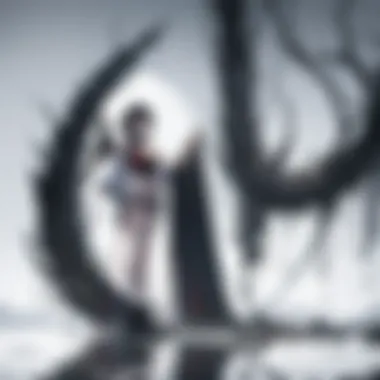
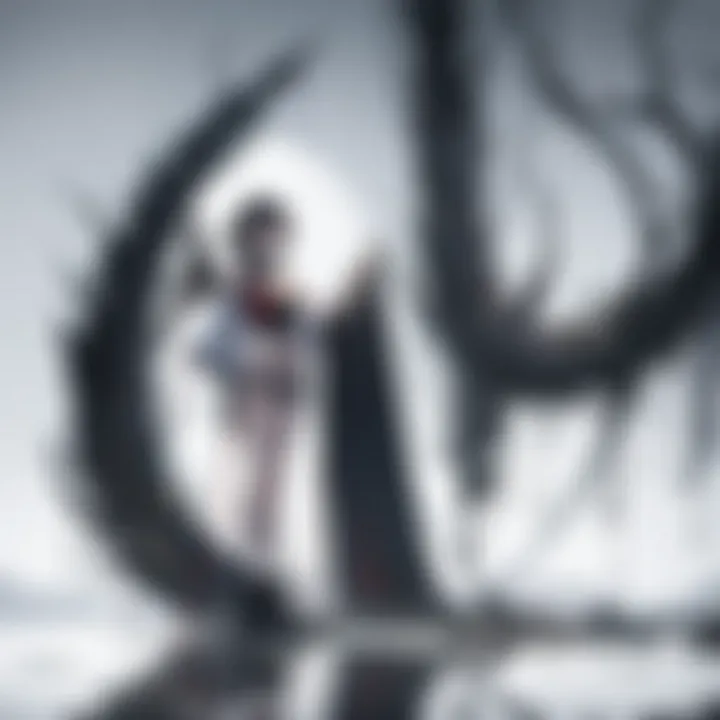
When we look at notable works like Neon Genesis Evangelion and Your Name, reflection emerges as a foundational element of character and plot. In Neon Genesis Evangelion, the themes of identity and mental health are deeply interwoven with reflective storytelling. Characters such as Shinji Ikari undergo intense self-reflection, questioning their motives and existence, which resonates with viewers facing similar existential dilemmas.
On the other hand, Your Name employs reflection through the lens of memory and longing. The characters, Mitsuha and Taki, reflect on their experiences across time and space, searching for connection. This reflective narrative creates a rich emotional experience, allowing audiences to engage with the underlying themes of fate and personal growth.
In both cases, reflection serves not just as a narrative device but as a catalyst for audience engagement. Viewers are invited to partake in the characters' inner journeys, making the stories more relatable and impactful.
Character-Based Analyses
Character development through reflection allows deeper psychological insight into personalities. In Attack on Titan, Eren Yeager’s evolution highlights how reflection can drive character actions. His struggle with his identity and the morality of freedom leads him to reflect on his choices, resulting in a complex character arc that challenges typical hero tropes.
Similarly, in Fruits Basket, Tohru Honda exemplifies the impact of reflection on healing and personal growth. Her ability to reflect on her relationships and past traumas fosters a sense of compassion and understanding. This character study serves as an example of how reflection informs relational dynamics and personal transformations across the anime landscape.
"Reflection invites us to delve into our own lives, mirroring the complex emotional journeys depicted in anime and manga."
By examining these critical works and conducting detailed character analyses, we can better appreciate how reflection enhances storytelling. It is not merely a component but a central aspect that engages viewers and validates their own experiences, making these narratives resonate long after they've finished watching or reading.
The Evolution of Reflection throughout Years in Anime and Manga
The evolution of reflection in anime and manga is essential to understanding how these mediums have developed over time. Reflection, as a narrative feature, has transformed significantly. It mirrors cultural changes and shifts in audience expectations, revealing deeper connections between storytelling and viewer engagement. This exploration showcases how characters and plots have evolved to incorporate reflective elements. These can reveal personal and collective experiences as society itself has changed.
Shifts in Storytelling Approaches
In the early days of anime and manga, storylines tended to be more straightforward. Most of the focus was on action and adventure, with little room for the introspective character journeys we see today. Series such as "Astro Boy" and "Speed Racer" reflected a more simplistic narrative structure. As the genres matured, there was a noticeable shift towards more complex narratives.
From the late 1980s onward, works like "Akira" and "Neon Genesis Evangelion" showcased a heightened emphasis on psychological depth. Here, reflection forms a critical pillar of the plot. Characters began to engage in deeper self-examination and emotional struggles. This evolution continues today with series like "Your Lie in April," which exemplifies a sensitive approach to grief and personal loss. These changes illustrate how storytelling has become more nuanced and realistic, pushing audiences to reflect on their own understanding of the themes presented.
Changing Audience Perceptions
Audience perceptions have also shifted alongside the evolution of reflection in anime and manga. Early viewers prioritized action and entertainment value. However, as the accumulated body of work grew richer, audiences started to appreciate the emotional resonance and complexity of characters. Today, many fans seek out stories that are reflective and relatable. They want narratives that resonate with their emotions and experiences.
With platforms like Reddit and various fan forums, deeper discussions around themes have emerged. The forum allows viewers to critique reflective elements in shows and books critically. The change in audience perception has directed creators to focus more on internal conflicts and character growth, as seen in series like "Attack on Titan" or "My Anime List." These titles emphasize moral dilemmas and personal growth within their narratives, reflecting the audience's desire for substance beyond just visuals and pacing.
"The impact of reflective storytelling cannot be overlooked, as it directly influences how audiences engage with their emotional landscapes, created through various narratives."
The conversation surrounding reflection has opened avenues for storytelling that go beyond surface-level entertainment. It fosters a rich discourse on personal development within every character arc, instilling a sense of community among fans who share similar sentiments.
The Future of Reflection in Anime and Manga
The importance of exploring the future of reflection in anime and manga cannot be overstated. This topic provides insights into how creators will continue to leverage reflection as a narrative device. As the industry evolves, the expectations and tastes of the audience also change. Understanding these future trends can aid creators in developing stories that resonate with viewers while encouraging deeper engagement. Additionally, it highlights the societal influences that shape narratives in anime and manga.
Predictions for Narrative Trends
As the landscape of anime and manga evolves, certain narrative trends can be anticipated. One key prediction is the increased integration of interactive storytelling. With advancements in technology, audiences may expect to influence character decisions directly, creating a more personal connection and engagement with the reflection process. Here are specific trends to monitor:
- Non-linear Storytelling: This allows for various viewpoints and timelines, enabling characters to reflect at different stages of their lives. Non-linear storytelling provides layered understanding of characters.
- Diverse Character Perspectives: Future narratives may present multiple characters reflecting on shared events. This approach broadens the exploration of themes like identity and trauma.
- Mental Health Representation: As awareness about mental health rises globally, stories might increasingly depict characters engaging in self-reflection focused on personal struggles, growth, and recovery. This trend can enhance relatability and provide important commentary on societal issues.
Emerging Genres and Styles
The future may also see the emergence of new genres and styles in anime and manga that utilize reflection uniquely. Some potential developments include:
- Psychological Thrillers: These genres challenge audiences with complex character analyses while making reflection a core theme. They provoke thoughts about morality, identity, and existence.
- Slice of Life: This genre could incorporate greater depth into character reflection. Realistic portrayals of daily life may make the reflective moments more impactful, allowing audiences to connect with characters in meaningful ways.
- Hybrid Genres: The blending of sci-fi, fantasy, or other genres with reflective elements may introduce innovative storytelling techniques. For example, futuristic settings could incorporate reflective technology, enabling characters to revisit memories or experiences.
In summary, the future promises exciting developments in how reflection is utilized within anime and manga. The ongoing evolution of narratives will not only reflect changing societal values but also enhance viewer engagement. Keeping an eye on these trends is crucial for any anime and manga enthusiast.
Closure
In this exploration of reflection in anime and manga, we have highlighted the intricate dynamics of how storytelling evolves alongside character arcs and societal implications. Reflection is not merely a narrative devise; it is a catalyst for deeper narrative immersion. By understanding reflection, audiences can appreciate the multi-layered storytelling that anime and manga offer.
Summarizing Key Insights
Reflection serves several crucial functions in these genres. First, it aids in character development, revealing the inner thoughts and motivations that shape protagonists. This often leads to significant character transformations. Second, the themes of identity, loss, and consequence emerge clearly through reflective moments, enhancing the emotional impact of the narratives. Moreover, reflective techniques such as flashbacks and monologues create a bridge between past events and current circumstances, deepening viewer engagement. \n
- Character Growth: Reflection allows characters to confront their pasts and reconsider their choices, leading to growth.
- Themes: Important themes like identity and grief are often explored through reflection.
- Cultural Context: The societal implications of these reflective narratives reflect the changing dynamics within Japanese culture and beyond.
In summary, reflection not only enriches individual stories but also offers insights into wider cultural and social currents.
Final Thoughts on Reflection
The future of reflection in anime and manga appears promising. As storytelling evolves, so will the methods of reflection used by creators. New genres and styles may emerge, further integrating reflective elements into narratives. This evolution can reveal how contemporary issues resonate with audiences.
Ultimately, profound moments of reflection capture the complexities of human life and relationships.
Reflective moments serve as a mirror, not just for characters, but for society itself.
As we move forward, the potential for reflecting on deeper thematic elements only grows, providing fertile ground for both creators and audiences to explore. With each new title, there's a chance for significant introspection and cultural commentary. This will ensure reflection continues to be a relevant and vital aspect of anime and manga storytelling.







